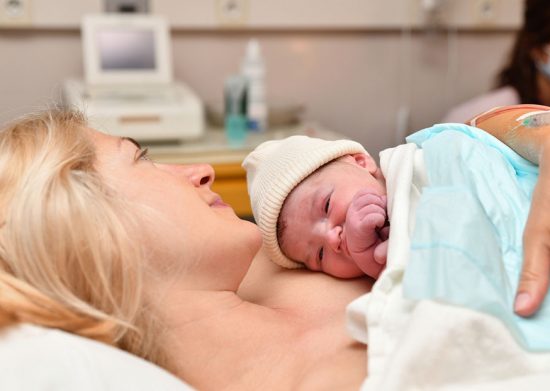Find out what you need to know about this pregnancy condition.
Pre-eclampsia is a condition that originates in the placenta. Women with pre-eclampsia have high blood pressure and high levels of protein in the urine.
Pre-eclampsia usually appears in the second half of pregnancy, or soon after the baby is born. Mild pre-eclampsia affects up to 6% of pregnancies, and about 1% to 2% develop severe cases.
Some women may develop swollen ankles, feet, face and hands, a severe headache, problems with their vision or pain just below the ribs.
During antenatal appointments, your midwife will routinely check your blood pressure and urine to look out for the signs. If you notice any of the symptoms of pre-eclampsia between your antenatal appointments, see your midwife or GP for advice.

Several factors increase the risk of pre-eclampsia. They are:
If you’re considered to be at high risk of developing pre-eclampsia, you may be advised to take a daily low-dose of aspirin. You’d take this from the twelfth week of pregnancy until the baby is born.
It can be very serious. If it develops, it can turn into eclampsia, which is where the woman has seizures.
Another serious complication of pre-eclampsia is HELLP syndrome, a combined liver and blood clotting disorder. HELLP can be life-threatening.
The only way to cure pre-eclampsia is for the woman to give birth. That’s why pre-eclampsia is one of the most common reasons for early inductions. Until then, it’s just about monitoring and managing the condition. This often means a stay in hospital and having medication to reduce blood pressure and the likelihood of serious complications like a stroke.
The exact cause of pre-eclampsia is still unknown but genetic factors play a part. It is clear that pre-eclampsia originates in the placenta.
The exact cause of pre-eclampsia is still unknown
The first stage of pre-eclampsia involves poor development of the placenta and its maternal blood supply. This means the placenta runs short of blood.
This may happen because demands are unusually high on the placenta – as with twins. It can also happen because the arteries in the womb did not enlarge as they should have when the placenta formed in the first half of pregnancy.

Treatment doesn’t usually end straight away when the baby is born. Most women will need to have their blood pressure checked regularly and they may continue taking medication to lower blood pressure for a few weeks.
Although pre-eclampsia usually improves after the baby is born, complications sometimes develop a few days later. This means women may need to stay in hospital after they give birth so that their condition can be monitored.
As the blood supply from the mother to the placenta is restricted, the baby’s supply of nutrients and oxygen may be reduced. This can lead to slower than normal growth.
Once pre-eclampsia is suspected or diagnosed, the unborn baby is monitored closely. The monitoring allows the baby to be delivered before problems become critical, usually between 34 and 37 weeks.
Women who have been through severe pre-eclampsia have a higher incidence of post-traumatic stress disorder (PTSD) and postpartum depression (PDD) than women without this complication.
If pre-eclampsia is affecting your mental wellbeing to a point where you are experiencing anxiety or depression, contact your GP or visit the pre-eclampsia foundation. It might help to speak to other women and share your story.
Our support line offers practical and emotional support with feeding your baby and general enquiries for parents, members and volunteers: 0300 330 0700.
We also offer antenatal courses which are a great way to find out more about birth, labour and life with a new baby.
Make friends with other parents-to-be and new parents in your local area for support and friendship by seeing what NCT activities are happening nearby.